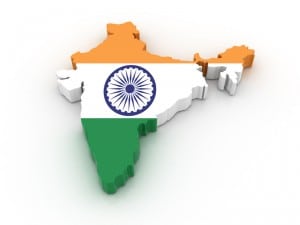 With its economy soaring and marketplaces showing big signs of success, it may be time to revisit selling cross-border into India.
With its economy soaring and marketplaces showing big signs of success, it may be time to revisit selling cross-border into India.
During its third-quarter earnings call last week, private equity firm The Blackstone Group Chairman and Chief Executive Officer Steve Schwarzman noted that India is in very good shape, growing at over 7%. And at the same time, cross-border starlets China and Brazil are facing financial difficulties there.
Speaking on its own third-quarter earnings call, eBay President and CEO Devin Wenig said its global growth has been sparked by the additional investment it made in its India platform, where it saw strong user acquisition in the quarter.
“We’ve got a great business in India that continues to grow very nicely,” Wenig said. “We feel like we’re investing appropriate amounts to grow the eBay brand, the buyer acquisition has been strong, the GMV growth has been strong, and we’re going to keep watching it and keep investing in it to grow our organic eBay platform.”
Wenig said there’s plenty of hype about India as an emerging ecommerce market, and there’s also been a lot of investment.
“But there’s also a good deal of reality in India and it is a growing market,” Wenig said. “It’s exciting and there will be multiple winners and we’ll be one of them.”
eBay is competing for marketshare with a pair of strong marketplaces that were founded in India: Snapdeal and Flipkart. Both marketplaces also held shopping holidays this month: Snapdeal’s Oct. 19 Monday Home Bonanza Sale was held in the run-up to Diwali, as was its Oct. 12 Electronics Monday Sale. Flipcart’s Big Billion Days sale was held Oct. 13 to Oct. 17.
And while both marketplaces boasted record-breaking sales, one of them did not escape unscathed.
According to Snapdeal, 65 orders per minute were placed by customers across home décor, furnishing and furniture on Home Bonanza Sale. Bangalore, New Delhi, Mumbai, Hyderabad Pune emerged as the top shopping cities. The result was a 10-time growth in order volume.
Snapdeal said it did more than $100 million in sales on Electronics Monday.
Meanwhile, Flipkart’s gross merchandise value for Big Billion Days touched $300 billion, according to The Economic Times of India.
However, Flipkart had a few logistics glitches along the way. The Economic Times of India reported that one footwear vendor who received around 120 orders on day one said he has not been able to dispatch the whole order even on the third day because Flipkart’s logistics partner was only collecting partial orders, saying they have been asked only to collect certain orders owing to huge demand.
Manish Maheshwari, vice president and head of sellers’ ecosystem at Flipkart, told The Economic Times of India that consumer demand was around 40% more than the 3 to 4 times increase the company had expected.
“Being a marketplace, everything that is ordered by the consumer has to be supplied by the seller,” Maheshwari told The Economic Times of India. “And we have limited capacity in terms of how many people we have and how many collections we can do in a day.”
Last year, Flipkart’s Big Billion Days woes stemmed with its website failing at crucial times.
Meanwhile, Flipkart announced earlier this month that it would become omnichannel with the addition of pickup locations as an alternate to its existing delivery model.
Currently, Flipkart Pickup Stores exist in select areas in many Indian cities including Ahmedabad, Bangalore/Bengaluru, Delhi, Gurgaon, Kolkata, Mumbai, Mysore, Pune, Silvassa, Surat, Vadodara, Vellore and Vapi.
By 2016, Flipkart Pickup Stores will expand by at least 100 more. As of now, Flipkart delivers to 10,000 of 25,000 PIN codes in India, and with Flipkart Pickup Stores, more people, especially in rural India, will have access to Flipkart’s offerings.What’s more is that for smaller, harder-to-reach areas, these stores will be mobile delivery vans that will station themselves for 48 hours in certain pre-decided locations for customer convenience.
eBay also has to compete with Amazon in India. Today, Amazon claimed that Amazon.in “continues to be India’s largest store with over 30 million products, having added an average of over 40,000 products a day so far in 2015,” according to its third-quarter earnings press release.
Amazon said in the release that in the past year, the number of sellers on the Amazon.in platform has increased more than 250%, and nearly 90% of Indian sellers are using Amazon’s logistics and warehousing services. To serve this growing storage need, Amazon.in has nearly tripled its fulfillment capacity year-over-year.
In the third quarter, active customers on Amazon.in grew over 230% year-over-year. So far, Amazon.in’s 2015 Diwali season is its largest ever, with daily sales of approximately 4-times the prior year.
